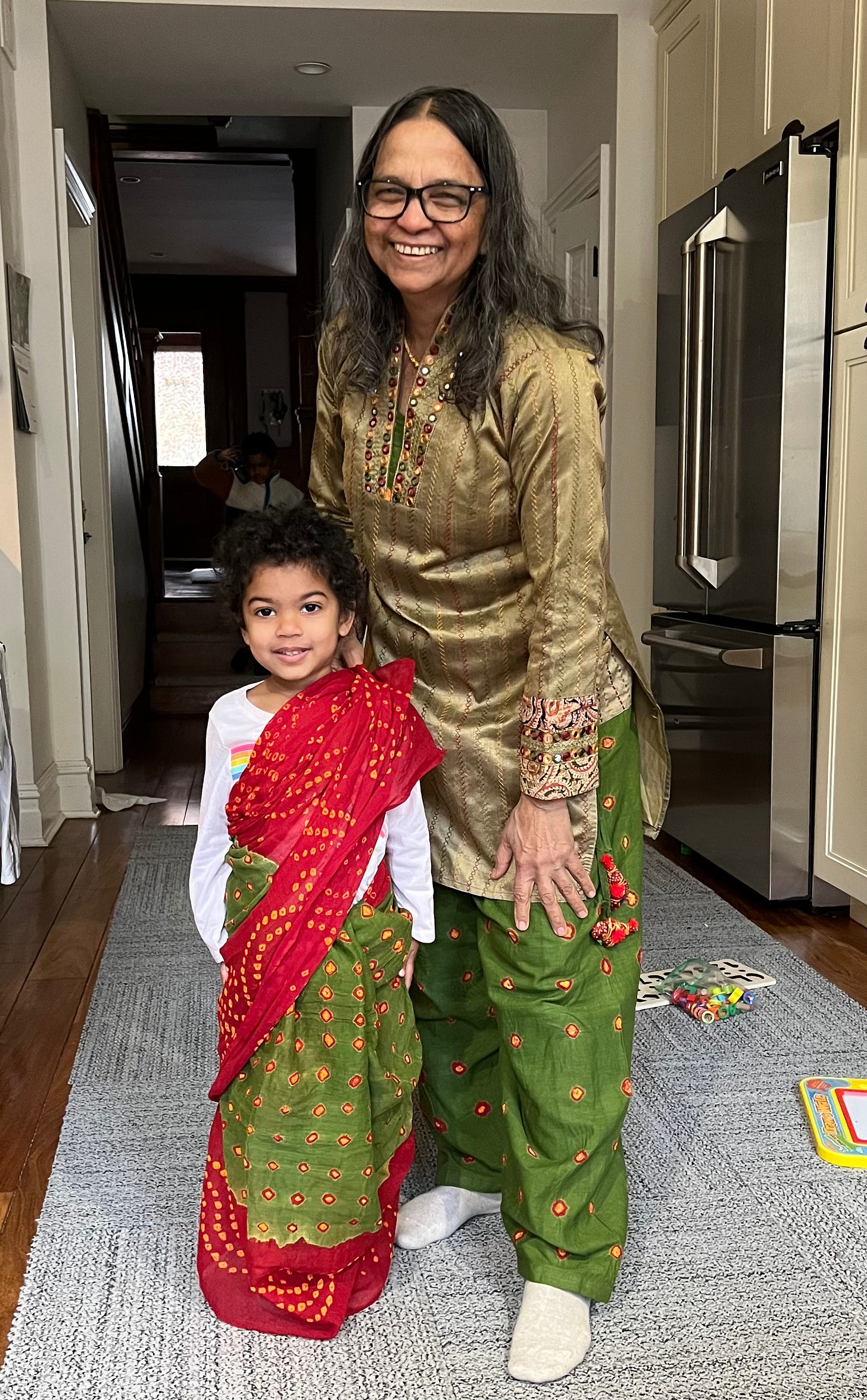Last month, my mother came over wearing a salwar kameez, a traditional South Asian outfit composed of a long tunic, drawstring pants, and a dupatta, or scarf. Salwar kameez vary widely in style, from the simple cotton of an everyday look to the enchanted silken hues worn to events. My mother had come from a baby shower, and her outfit was elegant, but not over-the-top fancy. The top and pants were made of moss and green-colored silk embellished with mirror work and embroidered with accents of red, saffron and metallic gold.
My three-year-old daughter, Zadie, was immediately drawn to this special garment. Zadie was born in December of 2019, a few months before the pandemic hit. For better or worse, she’s grown up in a significantly less festive period of life, with years of events postponed and our beautiful Indian garb pushed to the backs of our closets. She has only attended one wedding so far - my younger sister’s nuptials in my mother’s backyard in September of 2020. A small group of local family members sported block-printed masks along with our saris, while most of our clan celebrated over Zoom. Zadie was just ten months old in a floral dress and pink satin booties, sleepy from her missed nap. The event was intimate and beautiful, but nothing like the elaborate affairs I’d grown up attending in our Guyanese-Indian community.
But even without history or context, my daughter, with her natural penchant for fashion, understood the magic of my mother’s outfit. In minutes, my mother was on her knees in the middle of the kitchen wrapping Zadie in her dupatta. The fabric had a mix of bandhani patterning - an ancient resist-dyeing technique, like Japanese shibori. The word “bandhani” derives from the Sanskrit root, “bandh,” meaning “to bind or tie,” and refers to the process of tying small knots in a figurative pattern before over-dyeing the fabric.
The dupatta was just long enough for my mother to wrap Zadie’s small frame in the semblance of a sari - another traditional South Asian garment, typically six yards of fabric gracefully pleated and tucked over a petticoat and fitted blouse. Zadie grinned, twirling, thrilled to be adorned.
On a quiet Saturday afternoon in New York City, this length of cloth connected my mixed-race daughter to a centuries-old heritage several countries removed. My mother’s dupatta, barely two yards of light, airy material, bridged generations of migration and displacement, from my ancestors, who left India for Guyana under British colonization in the 1900s, to my own parents who left to create a new life in North America in 1979. The fabric, rich with pattern and color, told a story without words.
This sense of connection is what keeps me inspired as a textile designer, and what I hope to explore in this newsletter.
What are some of the textiles that conjure a sense of home for you, or transport you to a particular time in your life? Drop me a line if the mood strikes you.
Field Trips
Here are some great shows I’ve seen recently:
Nick Cave’s “Forevermore” retrospective at the Guggenheim Museum in NYC
Suchitra Mattai’s “Osmosis” at the Kavi Gupta Gallery in Chicago
Orchid Show at the New York Botanical Gardens in the Bronx
Events
I’m excited to share that I will be reading one of my essays at an event called “Listen to Your Mother” in Edison, NJ on Saturday, May 13 (the day before Mother’s Day). Click the link to find out more about the event and purchase tickets.
Thanks for reading!


